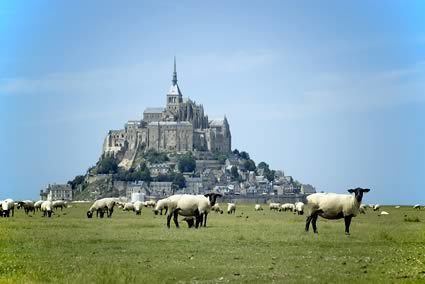Time zone CET (UTC+1) Arrondissements 4 | Department number 35 Area 6,775 km² Population 1.02 million (2013) | |
 | ||
Subprefectures FougèresRedonSaint-Malo Points of interest Great Aquarium Saint‑Malo, Fort National, Saint‑Malo Cathedral, Petit Bé, Grand Bé Colleges and Universities University of Rennes 1, EHESP, ESC Rennes School of, Agrocampus Ouest, Institut national des scien | ||
Ille-et-Vilaine ([i.l‿e.vi.lɛn]; Breton: Il-ha-Gwilen) is a department of France, located in the region of Brittany in the northwest of the country.
Contents
Map of Ille-et-Vilaine, France
History
Ille-et-Vilaine is one of the original 83 departments created during the French Revolution on March 4, 1790. It was created from part of the province of Brittany.
Geography
Ille-et-Vilaine is a part of the current region of Brittany and is bordered by the departments of Manche to the north-east, Mayenne to the east, Maine-et-Loire to the south-east, Loire-Atlantique to the south, Morbihan to the south-west, and Côtes-d'Armor to the west and north-west. Also the English Channel (la Manche in French) borders the department to the north.
The department is named after its two main rivers, the Ille and the Vilaine, whose confluence is in Rennes, the capital of the department and of the region. Other important rivers include :
The department is moderately elevated above the level of the sea, with many hills; however the central part has a dense network of many tributaries to the Ille or the Vilaine from all around the large basin of Rennes. The elevated hills bordering this basin are covered by several old forests now exploited by men for the production of wood. The basin itself is a rich agriculture area, as well as the north-west of the department near the Rance.
In the extreme south of the department the Vilaine goes through a slower decrease in elevation in a small corridor in the area of the city of Redon; in this area, the Vilaine is known for its frequent floods during its recent history, often because of too-intensive draining of agricultural areas around Rennes (some floods also affected some parts of Rennes up to the 1980s due to incorrect management of old equipment of the canal of Ille-et-Rance). To avoid these hazards within inhabited cities, some natural fields bordering the Vilaine in the south of the department are now left floodable, and works for regulating the level have been done including, small artificial lakes with derivation channels, replanting trees in the basin, better management of forests, and regulating the artificial drains made for agriculture.
Demographics
The population has grown rapidly over the last few decades and was estimated at 1,019,923 in January 2013.
Language
Gallo is a historic minority language spoken in eastern Brittany. Gallo and Breton are both studied at the University of Rennes.
Breton
Historically, the Breton language was little spoken in the eastern part of Brittany, and this was one of the first regions where the language disappeared such that Breton was not spoken for many centuries.
Today, Breton is again spoken due to schools teaching Breton, and due to a small immigration from Western Brittany to Eastern Brittany, where there are more cities with growing industries and external investment and therefore more work. A recent study shows that Breton speakers in this region represent 3.3% of the total number of Breton speakers. The Breton speakers aged 18–30 in this region represent 12.7% of the total number of Breton speakers of that age group. This is because there are relatively few elder speakers but many people are learning the language. The study says that about 1,800 people are learning it (this includes one Diwan school in Rennes, some bilingual public and catholic schools, and evening courses).
Politics
The President of the General Council is the Socialist Jean-Louis Tourenne since the French cantonal elections, 2004.
The city of Rennes and its suburbs are the original base of the rapid Socialist growth in the department. The city has been governed by Socialist Mayors since 1977, notably by Edmond Hervé between 1977 and 2008. Since then, the growth of middle-class suburbs have helped the Socialists, who have been rapidly gaining strength in those formerly right-leaning areas.
The right remains strong in a strongly Catholic (clerical) area from outside Redon to Vitré or Fougères. In addition, the right is strong in the wealthy coastal area of Saint-Malo and Dinard.
